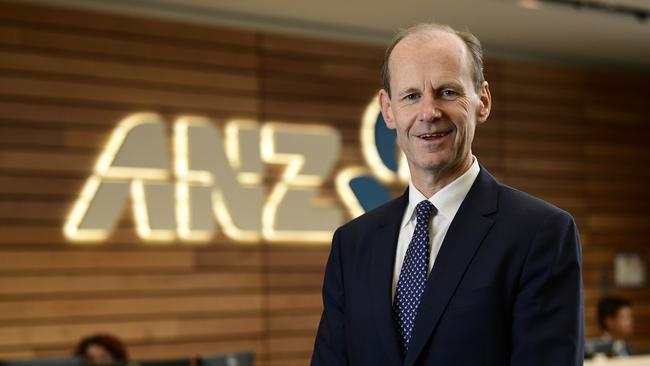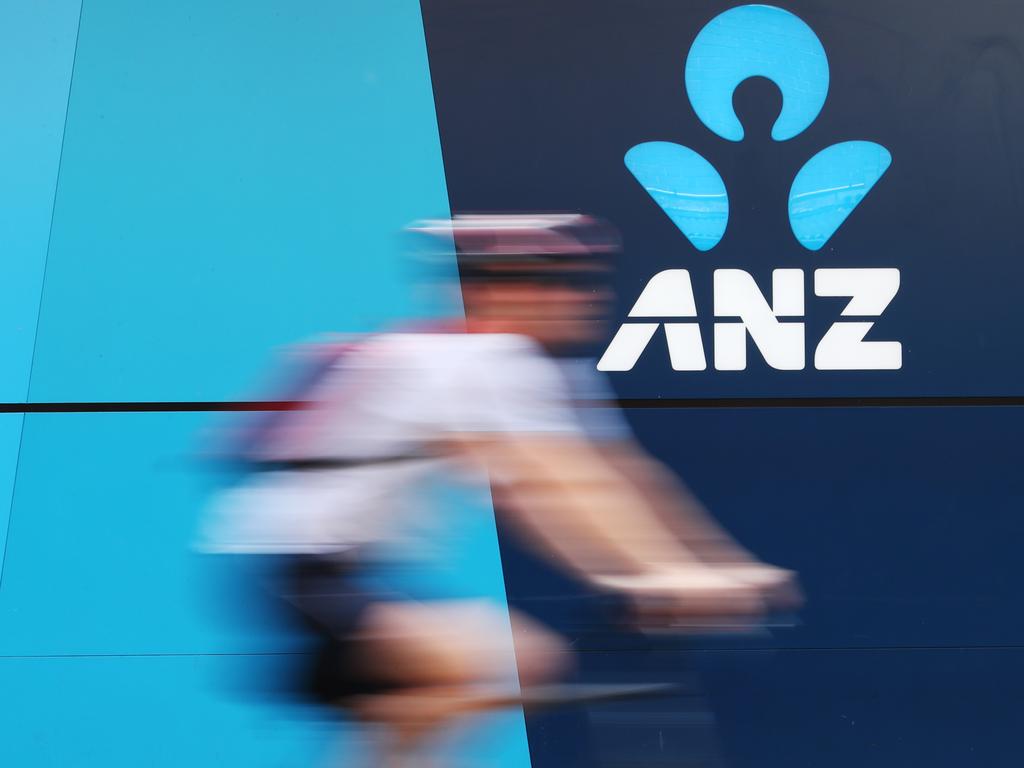ANZ counts the cost of COVID-19
ANZ chief Shayne Elliott warns it could take five years for employment to fully recover from the COVID-19 crisis.

ANZ Bank chief executive Shayne Elliott has warned it could take three to five years for employment to fully recover from the COVID-19 crisis, even with the economy opening in the coming months.
Mr Elliott made the grim forecast as he unveiled the bank’s half-year profit result.
A lot, he said, would change for the long-term, including consumer behaviour, attitudes to risk, use of technology, management of supply chains and ways of working.
“Interest rates are likely to be even lower, for even longer,” Mr Elliott said.
“There will no low-debt countries, governments will be larger, manufacturing more localised, and health systems reformed.
“Education and tourism will require substantial innovation.”
Turning to the outlook, Mr Elliott said there was no doubt that the months ahead would be “extremely difficult”.
“The crisis is evolving at such a pace, it is difficult to predict how deep the economic impact will be, or how long the recovery will take,” he said.
“As a result, this will be the most profound challenge many will have faced in their lifetime, including some of our own people.”
Mr Elliott said it was prudent to tolerate short-term use of capital buffers that could see the bank’s common equity tier one ratio dip below 10 per cent for short periods of time.
Variable pay would also be significantly reduced, with a focus on rewarding frontline junior staff.
On a more optimistic note, ANZ was open for business and experiencing record volumes in areas like home-loan refinancing applications and financial markets activity, with dramatic falls in ATM and branch transactions.
Mortgage asisstance
Meanwhile, some 105,000 mortgage customers representing $36bn worth of home loans had rushed ANZ to request assistance, the bank revealed on Thursday.
ANZ reported that around 15 per cent of its small to mid-sized business customers – representing loans of $7.5bn – had requested repayment deferrals.
But Mr Elliott said in deferring loans and providing assistance the bank was attempting to “flatten the curve of financial stress.
“A lot of the support measures that we are talking about here are really about buying time,” Mr Elliott said in a pre-recorded interview released by ANZ.
“What we’re seeing here … what is in nobody’s interest is to see families being put under immense stress or businesses”.
“And so what we are trying to do here, and Government policy and the banks interest, is to flatten the curve of financial stress, to buy, time so that people have the time to consider their options and make sure that they can have the best possible chance of surviving through.
Mr Elliott said while buying time may not be a cure for financial stress “it absolutely buys time just like with the health crisis to find a vaccine and the vaccine ultimately in financial terms is to make sure that the economy comes out of this in really good shape”.
“Yes the focus should be on support packages, flattening the curve of financial failure and now the banks, we’re at ANZ already working really hard preparing for the rebound,” he said.
The comments came as ANZ reported a 60 per cent drop in first half profit to $1.41bn, and deferred its dividend payment to until at least August.
ANZ also revealed a $1.03bn bad debt charge specifically related to COVID-19 related impairments. Earlier this week Westpac said it was expecting a $1.7bn charge for COVID-19 linked losses and National Australia Bank said it was bracing for more than $800m of losses.
ANZ said it has pre-approved more than $4bn in lending to 35,000 small business customers with existing transactional accounts and it has provided temporary overdraft increases for around 5500 commercial customers.
At the big end of town ANZ said it had increased lending by 12 per cent, or $16bn, during the half, with the majority extended in March to support businesses in “priority sectors” with their balance sheet needs.
Mr Elliott said “this unparalleled level of customer support” is ultimately in the long-term interests of all stakeholders, including investors.
Earlier the bank warned Australia’s economic growth is expected to contract 13 per cent in the June quarter as a base case assumption and to recover beyond that. It is tipping 2020 calendar year GDP to fall 4.7 per cent then growing by 4.1 per cent in the 2021 calendar year.
The unemployment rate – which is a key indicator of bad debts for banks - is expected to reach 13 per cent in the June 2020 quarter before moderate recovery in the September 2020 quarter. It is expected to average 9.0 per cent for calendar year 2020.
Meanwhile ANZ is tipping property prices are expected to fall progressively by 4.1 per cent in calendar year 2020 (taking into account growth pre COVID-19) and fall a further 6.3 per cent in calendar year 2021.







To join the conversation, please log in. Don't have an account? Register
Join the conversation, you are commenting as Logout